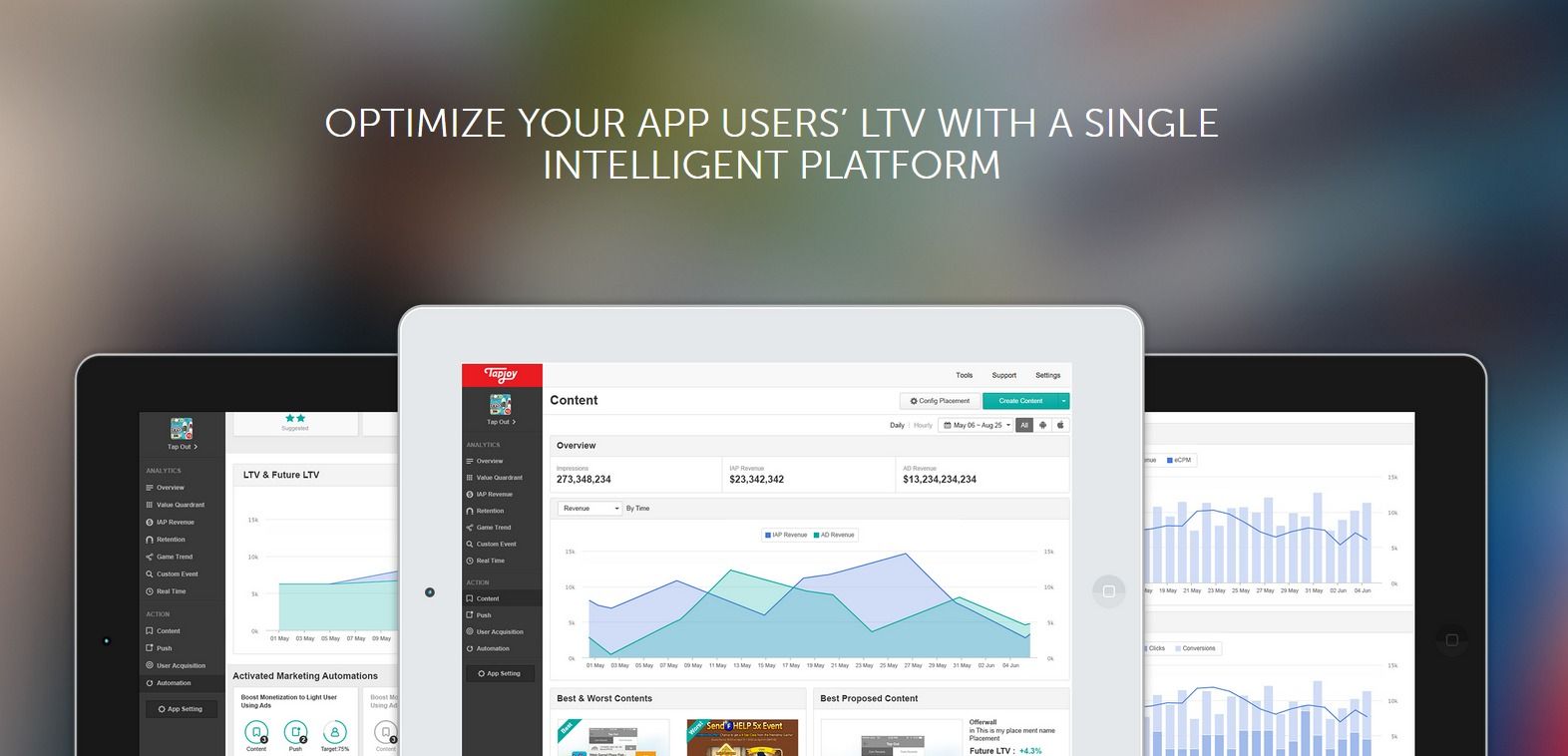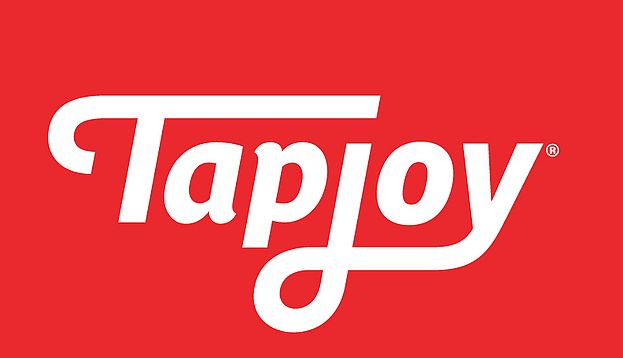Mobile advertising is evolving as rapidly as the mobile game industry, which is not surprising considering how the the two are intertwined. Marketers are moving more of their budgets into mobile ads, as mobile occupies a greater part of most consumer’s attention. It seems like a wise move, considering the intimate connection that people have with their mobile devices, and the massive data and precise targeting that are hallmarks of mobile advertising. Since free-to-play games have a small percentage of people who actually pay, ads may be a way to get more value from the game — but developers fear advertising may damage the experience for game players.
If this problem sounds like a business opportunity to you, you’re quite right. Taking advantage of that opportunity is veteran mobile advertising firm Tapjoy, which is launching its Marketing Automation and Monetization Platform at the Game Developers Conference today in San Francisco. The platform is a comprehensive way “to help freemium mobile app publishers maximize the lifetime value of every one of their users,” as Tapjoy’s press release notes. The new platform combines predictive analytics, marketing automation, IAP driven monetization and Tapjoy’s rewarded advertising solutions, which Tapjoy believes is the industry’s most comprehensive mobile marketing automation platform.

Tapjoy is one of the pioneers in mobile advertising, founded in 2007, growing and changing with the mobile industry as the smartphone came into its own. Tapjoy now reaches more than 520 million monthly active users globally (as of December, 2014), and Tapjoy’s SDK is embedded in more than 270,000 apps. Tapjoy’s ad platform “drives deep engagement and monetization opportunities for app publishers, while delivering valuable, engaged consumers to some of the world’s biggest brand advertisers,” as their web site describes it.
€œFreemium app developers understand that the vast majority of their revenue comes from a very small percentage of users,€ said Steve Wadsworth, president and CEO, Tapjoy. €œTapjoy’s Marketing Automation and Monetization Platform helps optimize the revenue from those proven spenders, while also uncovering more spenders and increasing engagement and ad-based monetization from the rest of their audience. With Tapjoy’s Future Value Map, developers can now predict the lifetime value of all of their users, and initiate personalized in-app experiences that maximize the engagement and revenue potential of every user.€
 Steve Wadsworth
Steve Wadsworth
“We are very excited about Tapjoy’s newly integrated product, especially the new analytic features and marketing automation tools,” said Domin Yoon, product manager at NeoGames. “The Future Value Map gives us a clear picture of our users’ lifetime value potential, and allows us to conduct effective marketing campaigns using this segmentation. We also look forward to increasing our monetization through the variety of content and messaging tools offered in the new Tapjoy platform.”
The [a]listdaily spoke with Tapjoy’s CEO Steve Wadsworth, CMO Peter Dille, and Chief Product Officer Jeff Drobick about the new platform and what it can do for marketers.
“We believe at Tapjoy that we need to do more for mobile app publishers,” said Wadsworth. “Our point of view is that today, many mobile app publishers are leaving a lot of money on the table in terms of opportunity to maximize the value of their apps. We’ve had a business for a while that’s been focused on advertising solutions to mobile app publishing. Integrate our solution into their app, and we would surface advertising in those apps and allow them to generate revenue. Part of what we learned is that advertising is great, but it’s not the full opportunity. Our goal has been to maximize the value of every user for freemium mobile app developers, and what this means is providing a platform that really captures the entirety of what a publisher needs to ensure they get the most value from every user.”
“What we’re announcing is the most complete marketing automation and monetization platform for freemium mobile apps,” Wadsworth explained. “We’re going to go beyond just providing an advertising solution. We knew that to provide a full platform you really need an admin solution and the ability to drive in-app purchases, and that both of those need to be wrapped in very deep analytics capability, and importantly real-time analytics that are predictive. The complete platform we’re announcing includes all those elements.”
The focus for Tapjoy is on free-to-play (also called freemium) games, and helping publishers optimize the return from such games. “Why freemium Freemium is by far the dominant model for mobile media companies to create value within their apps,” said Wadsworth. “If you look at the top 200 grossing apps on Android and iOS, more than 95 percent of them use a freemium model. It’s a departure, it’s a new paradigm in value creation. You’re running a service where users can engage in that service, and depending on how well that service engages them, they’re going to decide if they’ll purchase more from that service. It requires a sophisticated platform to fully understand user behavior and extract the true value of every one of those users. It requires the ability to analyze the behavior of every user very deeply, segment those users based on that analysis, and then take just the right action with each user at just the right time to maximize the value from every one of those users.” That, of course, is what Tapjoy’s new platform is providing.

There are certainly difficulties with the free-to-play business model that need to be addressed for any solution to be truly useful. “Within the freemium model there are a couple of problems we’re trying to solve. Today, less than 5 percent of freemium app users ever pay for anything in the app. Therefore there’s a huge opportunity to do a better job in increasing or engaging that 5 percent in a more compelling way, and there’s also an opportunity to engage the 95 percent and gain value from them. The issue is compounded by that fact that there is no solution in the market today to simultaneously maximize the value of both spenders and non-spenders,” Wadsworth noted. “The challenge is that a lot of publishers want to preserve their experience and optimize that experience for people who may purchase something in that app. Which means the idea of serving ads becomes something they’re wary of , because I don’t want to disturb the experience for purchasers. The solution we’re rolling out is intended to address both these problems, and to deliver to publishers a solution that will allow the to simultaneously maximize the value of both their in-app spenders and the non-spenders.”
“Monetize and grow lifetime value from the other 95 percent,” expanded chief product officer Jeff Drobick. “That, to me, is a really important opportunity for our publishers. And to make it easy so that broad-based publishers can focus on building great apps and not building technology capabilities to do this kind of stuff. Let’s make the insights easy to see.” The opportunity is huge, if publishers can succeed in unlocking value from even part of that vast audience of gamers who don’t provide any revenue right now.
There’s more than just analytics and optimizing the offerings at play here. “Our model on the advertising side is the rewarded model,” adds chief marketing officer Peter Dille. “A freemium app economy really does lend itself to a model in which an advertiser can sponsor content for a user. At that moment when we know the person’s not going to buy anything, we can put an ad in front of them where the advertiser is giving them that item that they want or the ability to access the next level, and the advertiser is in essence paying for that user’s ability to engage more deeply in that app. It may be watch this video from this advertiser and get this cool item or this next level, instead of trying to drive them to buy something you know they’re not going to buy.”
While mobile game design continues to advance, it’s important that companies like Tapjoy are seeking to advance the monetization side of the equation as well. Marketers need help to keep up with the advances in game design, and keep the money flowing in so designers are free to craft ever more engaging experiences. It will be interesting to see how Tapjoy’s new platform helps games realize their full potential value.

